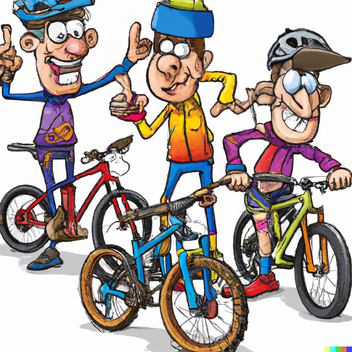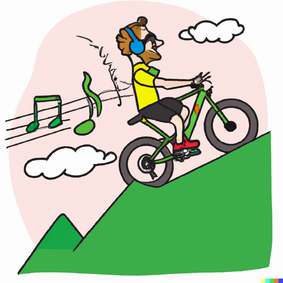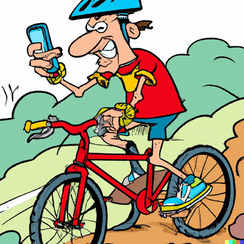 Michael King, Ph.D., Michael King, Ph.D.,Research Psychologist II NFL organization report cards were released a couple months ago! For the past two years, the NFL Players Association (NFLPA) has surveyed active NFL players to assess various aspects of each NFL team’s organization. The purpose of this is to illuminate what the daily experience is like for players and their families on each team, to serve as a sort of “Free Agency Guide” for all players around the league (Tretter, 2024). In other words, players want to see what it’s like working for different organizations to help them decide where to work (and where to avoid). Luckily, these report cards are published for the public to see, and there were some interesting results. The categories that teams are graded on are: Treatment of Families, Food/Cafeteria, Nutritionist/Dietician, Locker Room, Training Room, Training Staff, Weight Room, Strength Coaches, Team Travel, Head Coach, and Team Owner. Teams are graded on these categories using a classic ten-point grading scale. Overall grades are weighted using a weighting scale that weighs more heavily on the grades of the Team Owner and Head Coach and less on the Dietician and treatment of Families (interesting weighting choice). You can find the full report card of each team here: https://nflpa.com/nfl-player-team-report-cards-2024. As an NFL fan, I find these report cards fascinating. I want to know how my team’s grades stack up with other teams. But it got me wondering: do these grades matter in terms of performance? Does the quality of the cafeteria food drive performance on the field? How do organizational benefits and workplace quality impact wins and losses? I took my football fan cap off, put on my research psychologist cap, and got to work to investigate these questions. I transformed letter grades to the ten-point grading scale and ran correlational analyses between organizational grades and NFL regular season win totals. Here are some of my findings.
These results are compelling. Overall, it appears that organizational benefits really do not impact wins and losses. However, an organization’s treatment of players’ families and the locker room quality do have an impact. If teams take care of players’ families, it may take a load off the player’s minds during games. If a player is worried about their family getting harassed by fans, not having a place to watch the game in comfort, and having to find a daycare away from the stadium for their kids, they may not perform at as high of a level. If the locker room is small and crowded and players don’t have a place to relax or recuperate between halves and before games, they may not be able to mentally and physically prepare to perform at their best during the game. Like a good data hygienist, I needed to explore the overall results a little more. When we plot out the comparison between organizations’ scores and their wins and losses, there is one particularly intriguing data point. It turns out that the team with the lowest average organizational score (unweighted) also had a very high number of wins. This team is none other than the 2024 Super Bowl Champions, Kansas City Chiefs. The Chiefs received F ratings for their Nutritionist/Dietician, Locker Room, and Training Staff and a staggering F- for their Ownership. Ouch. Additionally, they received only a D+ for their treatment of families (look out, Taylor Swift). The Super Bowl champion having the lowest overall rating seemed like a good reason to remove them from the analyses as an outlier. When we remove the Kansas City Chiefs from analyses, we find that there is a statistically significant relationship between NFL regular season wins and average organization grade (r = 0.41, p < 0.05), and the relationships strengthen between regular season wins and treatment of families (r = 0.38, p < 0.05) and locker room quality (r = 0.44, p < 0.05). It turns out that the quality of a workplace environment does impact team performance. However, this is among world-class athletes, who, for the most part, are getting paid millions of dollars every year. What does this relationship look like for other organizations? Over the past decade, we have seen a higher emphasis placed on glamourous workplace benefits, especially in the tech industry. Companies tout benefits ranging from professional chefs serving three meals daily, free laundry services, and even “pawternity leave” for new pet owners. But does this actually improve performance among their employees? Is the cost of providing glamorous benefits worth it for companies? Maybe companies should take a page out of the NFL’s book. Offer benefits that ensure employees’ families can be properly cared for and provide a functional work environment so employees can have physical and mental well-being in the office. The rest of it might just be fluff. That said, please, QIC, don’t take away my office snacks. References
Tretter, J. (2024, February 28). NFL team report cards 2024: For the players, by the players. NFL Players Association. https://nflpa.com/posts/nfl-team-report-cards-2024-for-the-players-by-the-players
0 Comments
 Dr. Eric Sikorski, Director of Programs & Research Dr. Eric Sikorski, Director of Programs & Research How many of you have witnessed it? A group of cyclists or runners taking over the trail, roadway, or sidewalk. The majestic herd in their natural habitat. Perhaps you have even been a part of such a herd. Once a week, I attend a local mountain bike group ride and was recently pondering the potential benefits in terms of learning and performance, beyond the social aspects. Some answers came after witnessing an interesting sequence of events a few weeks ago. Here's how it unfolded: A faction of approximately 15 riders took off quickly from the meeting point, speeding over jumps, negotiating turns, and crossing streams. After reaching the top of a long climb and taking a collective breather, one of the riders exclaimed "(name) will never want to ride with us again" implying that it's too difficult. That rider, appearing somewhat offended, retorted "what are you talking about? I ride 30 miles a week! I'm fine." That same rider started the next segment near the front of the pack, at a fast pace. The group can motivate us to work harder and test our limits more than if we were on our own. The reasons for this are a complex array of personality and social psychology factors. Wanting to look competent in front of your peers can be an extrinsic motivator. Not wanting to drop too far back from the pack is a survival instinct the far predates the invention of the wheel, let alone the mountain bike. Then, the rider who was previously forced to defend his honor fell... twice, within just a few minutes. The train of riders behind him had to wait as he untangled his bike from a fellow rider (the first time) and from some shrubbery (the second time). To the fallen rider's credit, he kept an awesome positive attitude, apologized to the group, dusted himself off, and kept moving down the trail. There is a potential danger in pushing past our limits when with a group. It can lead to repeated mistakes as we choose not to let up at risk of performing below the group's standards. We start trying too hard, we miscalculate, and that normally simple obstacle becomes a hazard. When we make a mistake we fear that everyone is judging and mocking us, which becomes a distraction. We get "in our head" and may not have, or want to take, the time to reset like we would if riding alone.
At the next break, a member of our group politely told the rider who fell that his seat may be too high, which could impair balance. Immediately, he adjusted his seat. From then on, I heard instruction being given and I observed adjustments being made, such as position on the bike and foot placement when negotiating challenging obstacles. The dynamic of those two riders became that of a mentor and mentee. The impromptu coaching from a group member was unexpected. It also risked offending, but the instruction was given in a humble and supportive way and received with grace and curiosity. Even with just some basic instruction and minor adjustments, the rider's improvement was noticeable. This sequence of error, observation, and instruction coupled with the riders' willing spirits led me to think about the group ride as more than just a motivator but also as a powerful learning tool. Incidentally, I also benefitted from the instruction and have to assume I was not the only one, beyond the intended recipient. So, when music and YouTube videos just aren't enough to up your performance, I suggest joining a local group ride. You never know what you might learn. Until then, keep collaborating and enjoy the ride!  Dr. Eric Sikorski, Director of Programs & Research Dr. Eric Sikorski, Director of Programs & Research Do you listen to music while exercising? Does music make you feel stronger, faster, and/or more focused? You’re not alone, as research suggests that music can improve performance in endurance, sprint, and resistance exercise. This is due to a combination of psychological and physiological effects such as more positive affect, lower subjective fatigue, and increased cardiac output and oxygen consumption. Given this evidence, I decided to listen to music during a recent ride. On that “musical ride”, I felt more comfortable on the bike, faster on the course, and more willing to take on difficult obstacles. Time also seemed to pass quickly, and the climbs were less of a slog. While I felt different on this ride, the objective data indicated my performance (e.g., average pace, maximum speed, elevation gained) was about the same as my previous, sans music, rides. Of course, this was only one session and there are several factors that were not controlled for such as course conditions, sleep, nutrition, hydration, and even exact tire pressure. Still, the subjective feeling of awesomeness contrasted with my actual mediocre performance is worth exploring. The feeling awesome part of my ride can likely be attributed to music’s ability to elevate mood and motivate, making those uphill sections less dreadful and increasing my will to tackle a challenging section. The music may have also served as a positive distraction from my tired legs. I was, at times, in a flow state, fully immersed with a focus on the activity and a reduced self-consciousness about effective execution. There are several explanations for why the music did not result in improved performance despite the elevated feelings. While music helped me focus and be less conscious of fatigue, my skills remained at a novice level. Difficult obstacles are were difficult and time-consuming, even if I was more willing to take them on with the help of artists such as Linkin Park. The tunes may have also diverted too much attention from the task, such as not allowing for mental rehearsal as I entered a technical trail section.
Interestingly, music preference can mediate exercise performance benefits. For the ride in question, I went with a curated “mountain biking” Spotify playlist where I enjoyed some of the songs but many were skips. This may have limited the sustained benefits of music on this ride. Incidentally, reaching for the skip button on my earbuds may have created an additional distraction, reducing speed and taking me out of my flow state. While the research points to psychological and physiological benefits of listening to music while exercising, do not expect that to translate immediately into objective performance gains. To that end, there is no substitute for proper instruction (see previous musing “Can YouTube Teach Me How to Ride?”) and deliberate practice to develop your competency. Music can be a great companion as you log those hours, and a motivator as you test your skills on increasingly challenging technical sections. So keep grooving and enjoy the ride! We're going to take next week off; Happy Independence Day! We'll follow up with the final post in the series on the value of Groups in training, the following week!  Dr. Eric Sikorski, Director of Programs & Research Dr. Eric Sikorski, Director of Programs & Research Have you used YouTube to learn a new skill? According to a 2018 Pew Research Center study, over 50% of U.S. YouTube users, which is approximately 35% of all U.S. adults, indicated “the site is very important when it comes to figuring out how to do things they haven’t done before.” I can just hear my Instructional Designer friends saying “yes, but videos on their own may not be enough.” After purchasing a shiny new mountain bike and waiting for it to be shipped, I started consuming YouTube videos centered on the fundamentals of mountain bike riding. There are numerous videos on the topic, and many are quite good, with clear explanations and demonstrations in real-time and slow motion. When my bike arrived, I felt confident and ready to tear up the trails with my newly acquired YouTube-based knowledge. Not so fast! In fact, my first ride was quite slow and objectively pretty bad. The video-based instruction not transferring to real-world performance of a complex psychomotor skill is not surprising. An obvious issue is that I did not perform the task immediately after video demonstration. For instance, I could have watched a video on a specific skill, such as cornering, at the top of the hill then attempt to execute while careening down. Still, time from demonstration to practice does not seem like the complete answer. I thought about M. David Merrill’s First Principles of Instruction, described below, and why videos are just part of a more comprehensive learning strategy. Task / Problem Centered: Learning must be in the context of a real-world problem. One limitation is that I did not have baseline data, so my approach to viewing online content was broad rather than focusing on a specific task or problem, such as cornering or braking techniques. Activation: New knowledge must be built on prior learning. YouTube video creators are appealing to a general audience without the luxury of a learner analysis. That leaves it to the viewer to reflect on their prior knowledge and see where the new learning fits. It would have been beneficial to think about what I know, such as riding a road bike, and how that may apply to what I saw in the videos. Demonstration: Videos can effectively provide learners with practical demonstrations of specific skills and proper techniques. The mountain bike training videos typically included a verbal explanation followed by an on-bike practical demonstration, often with narration. The challenge was not having my own experience as a point of reference, such as how demonstrated techniques “feel” on a bike. Application: Use the new knowledge in a meaningful way, through practical application. While riding, I identified knowledge and skill gaps based on indicators such as apprehension and mistakes then made mental notes that I wrote down after the ride. Integration: Continue to apply the new knowledge and build on it. This principle highlights the main flaw in my original thinking. It is unreasonable to expect to go from watching videos to proficiency. Similarly, practice alone is not enough. I consider Merrill’s First Principles a cyclical process of continually defining and refining the problem to be solved, building on prior knowledge, viewing demonstrations with an emphasis on targeted areas for improvement, and deliberate practice toward mastery. The next time you want to learn a new skill and are about to type some words into that YouTube search bar, take a moment to think about how the videos fit into a more comprehensive approach. With so much web content readily available, including engaging videos, it is easy to forget that demonstration is just part of the whole. In a world that expects immediate results, as I mistakenly did, it is also easy to forget that complex skills require extensive practice, so keep learning and enjoy the ride! In the next post we'll take a look at music and peformance! |
AuthorsThese posts are written or shared by QIC team members. We find this stuff interesting, exciting, and totally awesome! We hope you do too! Categories
All
Archives
June 2024
|






 RSS Feed
RSS Feed